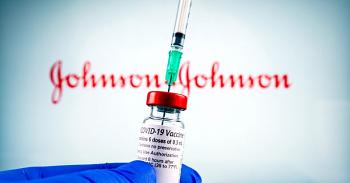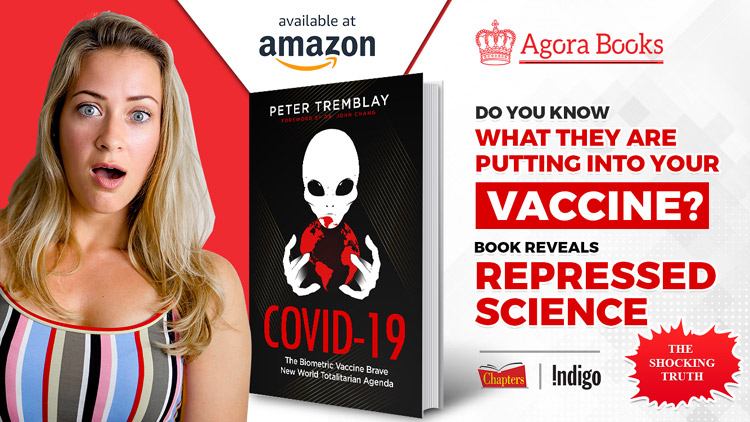Media Hails New J&J Vaccine, Ignores Pharma Giant’s ‘Checkered Past’
On Feb. 26, the U.S. Food and Drug Administration (FDA) announced — via a Saturday evening tweet — that the agency granted Emergency Use Authorization for Johnson & Johnson’s (J&J) coronavirus vaccine for Americans 18 and older.
Claiming that “we’re in a hurry” because there’s not enough supply of the two COVID-19 vaccines already authorized for emergency use — Pfizer’s and Moderna’s — members of FDA’s committee agreed without dissent to allow a third COVID injection into the U.S. mix.
While the media drummed up enthusiasm for the expanded options, the Washington Post on March 2 offered an even splashier scoop: a “historic” production partnership between J&J and Merck, two pharma giants ordinarily portrayed as “fierce competitors.”
Employing hyperbolic language about the “wartime effort” and good “corporate citizenship,” public health leaders instantly celebrated the “unusual” arrangement for its potential to double “what Johnson & Johnson could make on its own.”
Experts bill J&J’s one-dose injections, which are storable for several months at refrigerator temperatures, as the ideal solution for vaccine programs challenged by the trickier storage and handling requirements of the two-dose Pfizer and Moderna shots — an “advantage [that] goes up in neon,” Dr. William Schaffner, an internist and infectious disease specialist with Vanderbilt University’s Department of Health Policy, told News7 Boston.
Dr. Nancy Messonnier, who leads the Centers for Disease Control and Prevention’s (CDC) COVID-19 vaccine efforts — and who two years ago sat next to Dr. Anthony Fauci as he gave Congress false information about adverse events from measles vaccination — according to CNBC conceded the J&J product will be “operationally easier in lots of contexts” and “better suited for some populations.”
Anticipating a lucrative opportunity, J&J is already preparing to launch expanded clinical trials in children (including newborns and infants) and pregnant women.
Different design, same goal
Rather than use the messenger RNA (mRNA) technology being deployed for the first time in the Pfizer and Moderna injections, J&J’s vaccine (made by the company’s Janssen Pharmaceuticals subsidiary) features a genetically engineered “viral vector” design reliant on a weakened common-cold virus called adenovirus 26.
Adenovirus vaccines have a lengthy history of use in the U.S. military, but the FDA’s emergency green light for J&J’s COVID injection represents the first time the agency has authorized an adenovirus-vectored vaccine for civilian use.
Last summer, J&J obtained European approval for an Ebola vaccine using the vector technology. Oxford-AstraZeneca and CanSino Biologics have adopted a similar approach for their COVID-19 vaccines, though with different adenoviral vectors.
As J&J describes them, adenoviruses are “good for transporting things into humans.” In the case of the COVID vaccine, the aim is to shuttle genetic instructions — DNA coding for the coronavirus spike protein — into the cells and force the cells to make spike protein. In theory, these “self-made spike proteins” are then supposed to train the body to “detect and terminate any real SARS-CoV-2 infections before the virus wreaks havoc.”
Although the mode of delivery is different from the lipid nanoparticles (what CNN describes as “delicate little balls of fat”) that function as a carrier system for the Pfizer and Moderna mRNA vaccines, all three FDA-authorized COVID vaccines share the same novel goal of getting the body to manufacture spike protein — a goal that represents a radical departure from traditional vaccines.
A University of Tennessee microbiologist told Knox News that J&J’s approach is immunologically powerful, stating that the modified adenovirus vector is “about as subtle as a wrecking ball” and “very visible to the immune system.”
According to a May 2020 article in Chemical & Engineering News, the adenovirus approach — with 30 years of study behind it — has a “checkered past,” including as a “failed gene therapy.”
Undaunted by adenoviral vectors’ ability to generate dramatic and even fatal inflammatory effects, vaccine researchers embraced the strategy, only to discover that booster shots might “unleash an antibody attack on the vaccine itself.”
In 2007, Merck encountered yet another problem when it conducted clinical trials for an adenoviral-vectored HIV vaccine that, paradoxically, increased the risk of HIV infection in a subset of recipients — a cautionary tale that “put a big kibosh on adenoviruses” for some years thereafter.





